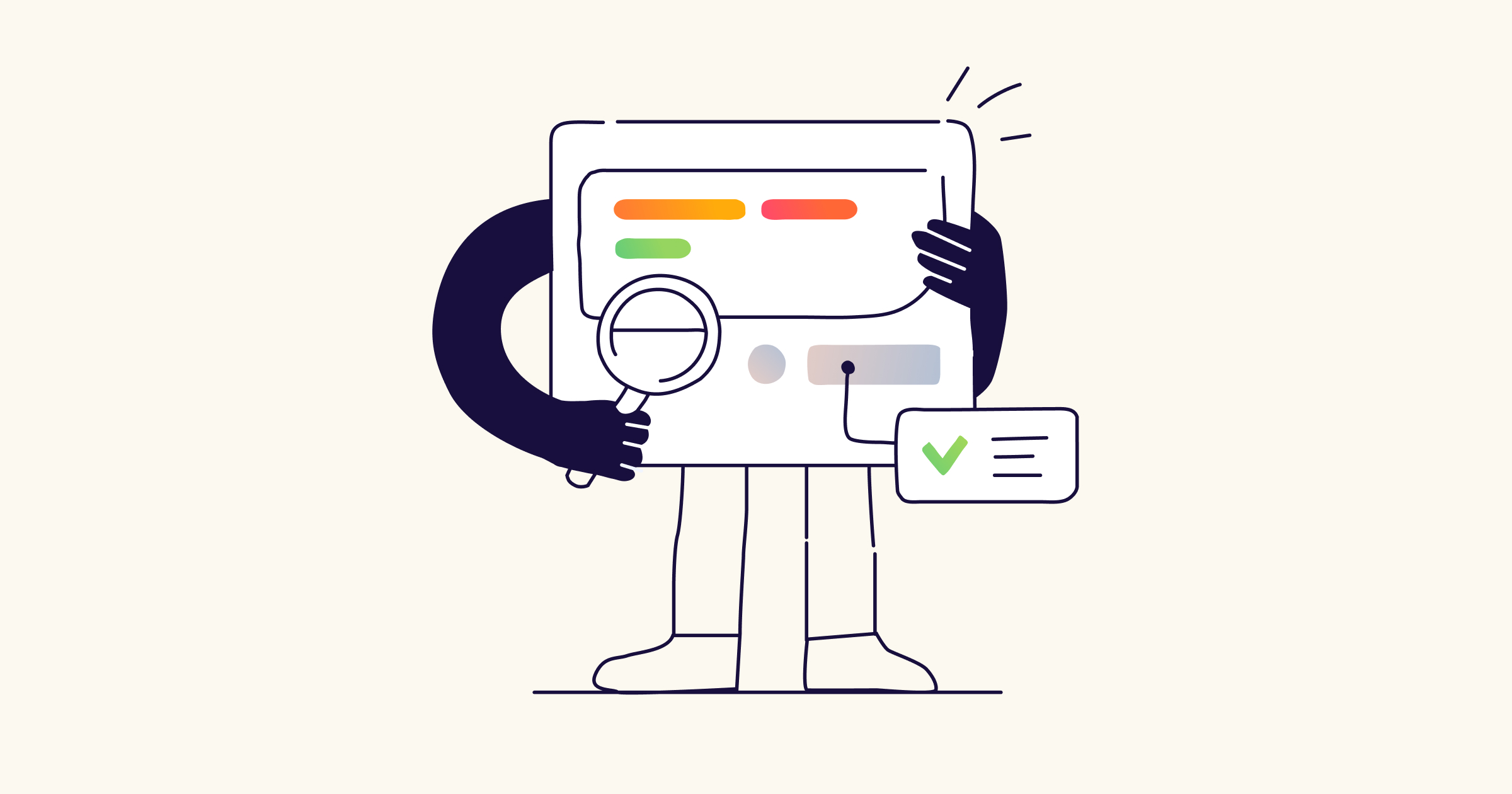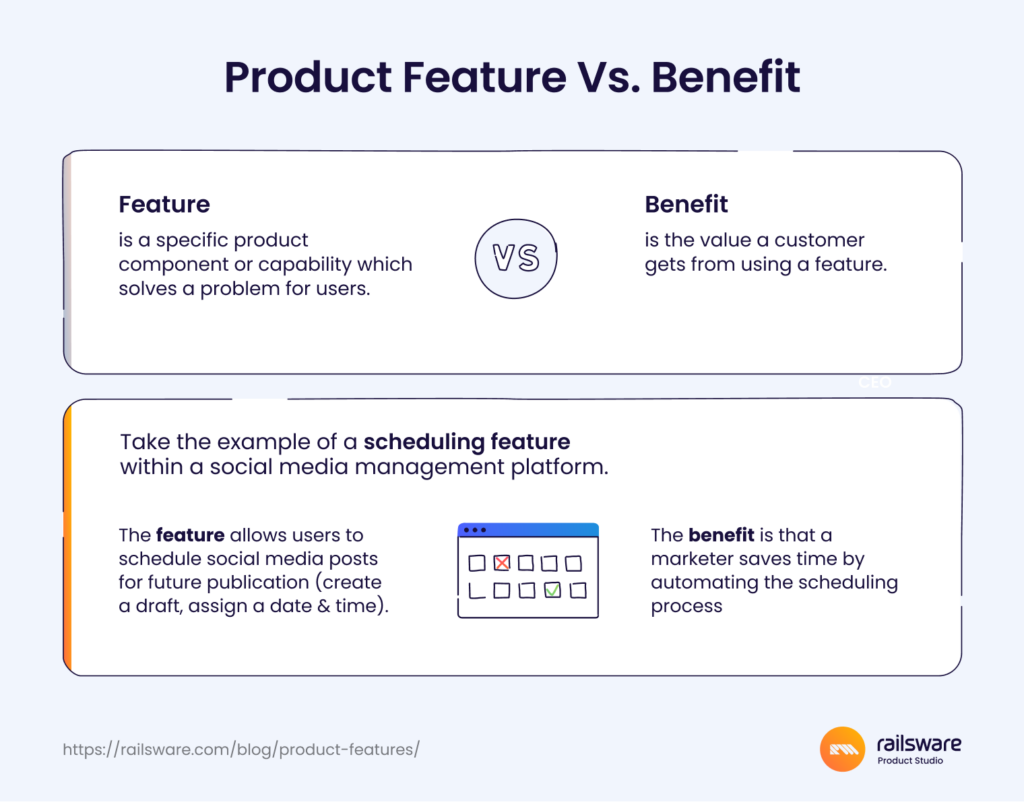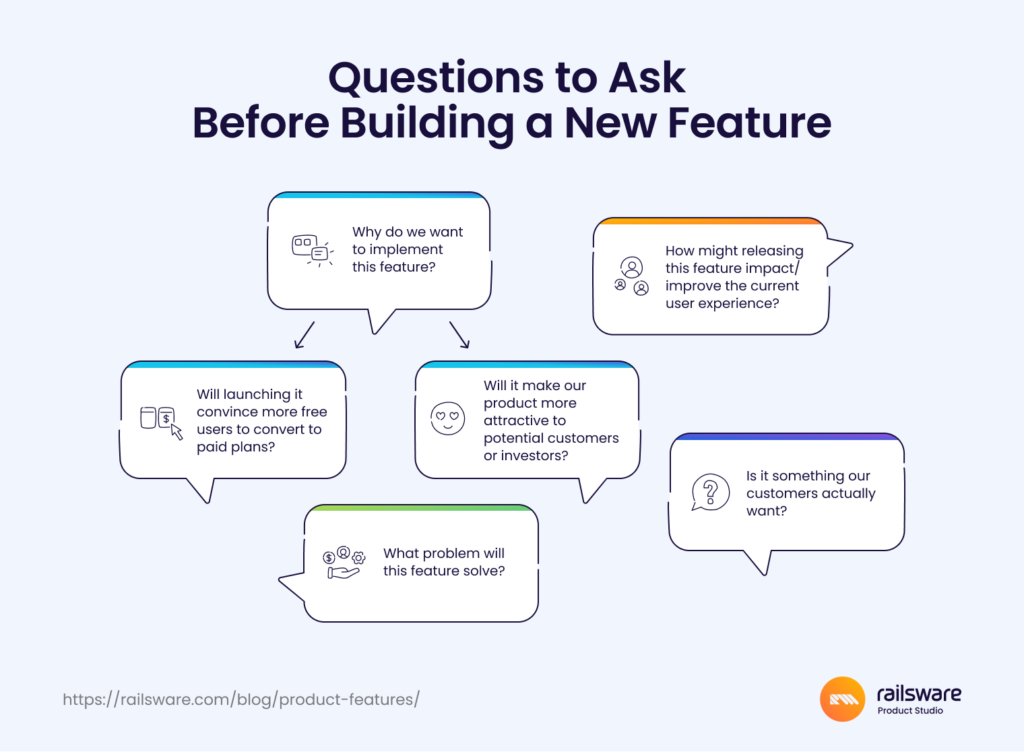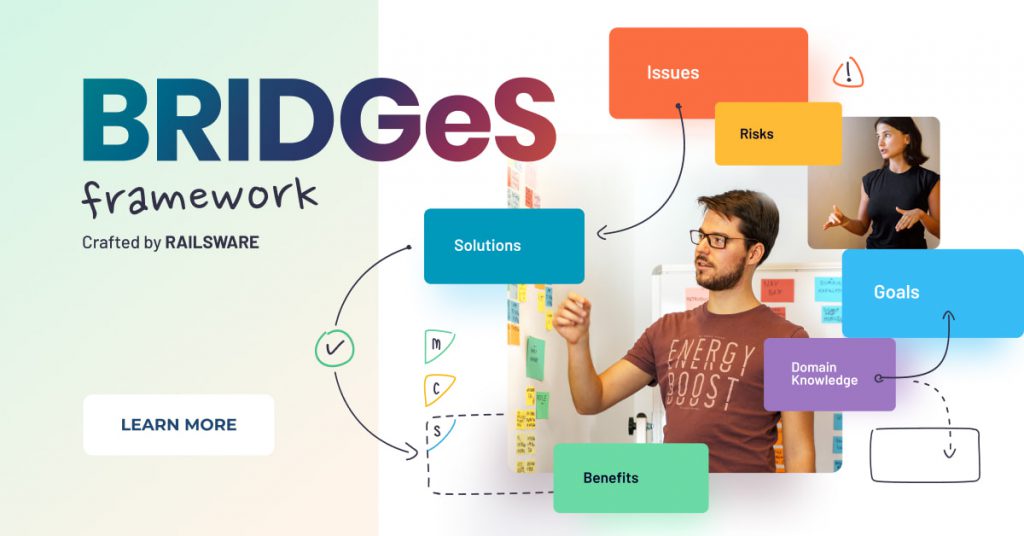Our focus here will be on B2B SaaS feature development. Bear in mind, though, that most of our advice extends to hardware, e-commerce, and general non-SaaS feature development as well.

What is a product feature?
Anyone who’s ever used a digital product before (i.e. the typical modern consumer) has some understanding of what a feature is. But for the purposes of this article, let’s establish a clear definition.
A feature is a specific component or capability of a product. It exists to either solve a user need, delight customers, or support the overall functionality of the product.
Feature vs. benefit
It’s easy to confuse the concepts of features and benefits – especially within a product marketing context. But it’s important for product managers (PdMs) not to use these terms interchangeably. So, let’s look at the difference (and connection) between these two concepts:

Types of product features
How can we describe and categorize product features themselves? Let’s explore the types of features commonly found in SaaS products.
- Functional features, which define what the product actually does (and what niche it falls into). In the case of Asana, one such example would be its Gantt and Kanban boards for project tracking.
- Collaboration features such as in-app messaging, file sharing, calendars and event scheduling, commenting, etc.
- Artificial intelligence features like predictive search, personalized in-app recommendations, auto-generated reports, AI-powered chatbots.
- Security features which may include two-factor authentication sign-in, auto VPN connect, or access controls so users can manage roles and permissions.
- Customer support features like help desk ticketing, real-time chat, knowledge base.
- Reporting features that allow users to track the performance of campaigns using tools such as session replay, understand their own customer data, or manage their product usage, e.g., analytics dashboards.
- Customization features such as UI themes, custom fields, interface layout options.
- Accessibility features, which may include keyboard navigation, high contrast themes, adjustable zoom, keyboard shortcuts.
- Automation features depend on the type of product, but an example from our product Mailtrap.io is the ability to run automated checks on your emails with the email testing API.
- Added value features are anything that enhance the customer experience, or make the product stand out on the market (e.g. taxis offering baby car seats in Uber, Travelperk’s business travel carbon offsetting program).
Like we mentioned earlier, product managers must strive for balance when adding new features to a product. Functional features are the cornerstone of a product; they help users reach their main goals. On the other hand, added value features aren’t essential, but they make your product memorable and inspire loyalty. Having the right combination of both is key to product success.
Meanwhile, customer support, customization, security – these features aren’t exactly non-essential, but they are expected. On a foundational level, they ensure the smooth running of your application. And sometimes, they can double as added-value features. An example of an enhanced customer support feature might be a Chat-GPT-powered chatbot.
Now, let’s put all of these features into perspective. Here’s a snapshot of 3 different B2B SaaS products’ key features:
| Coupler.io Data analytics & automation platform | Gusto HR and payroll management software | Basecamp Project management platform |
|---|---|---|
| Data collection with over 200 integrations | Employee time and attendance tracking | One-page dashboard for project tracking |
| Combine data in a single dashboard | Talent management tool for training and development | Discussion and collaboration boards for teams |
| Data transformation tools | Job vacancy posting portal | Calendar scheduling |
| Dashboard templates for visualizing data | Custom onboarding checklist creation | Real-time group chat |
| Get help from data experts | Employee documentation hub | Cloud file support |
| Auto-refresh for data updates | Reporting tool for HR analytics | Automatically generated check-in forms |
Why is it necessary to release new features?
If you’re managing a mature product, the goal of releasing a new feature is to increase revenue. When analyzing feature requests and ideas in the product backlog, PdMs must constantly ask the question: could this feature improve our product offering and attract new paying customers?
For early-stage startups without a paid subscription model, your goal is simply to establish a place on the market. It’s critical to release features that capture your target market’s (and potential investors’) attention. A strong product strategy, combined with a firm understanding of your buyer persona(s), will provide clues on where to start. See our Jobs To Be Done examples for guidance on identifying who your audience is, and what they really want.
How to avoid feature creep?
Many product managers equate product growth with an ever-expanding feature set. But you can’t rely solely on new features to attract new customers to your platform (other factors like pricing, product positioning, etc. can affect its perceived value). Having a ‘bigger’ product than your competitors is useless if you don’t align new features with your product vision and the needs of your specific audience.
To dodge the black hole of feature creep, PdMs must establish clear guidelines and processes for feature development. Data-driven decision-making should be central to any development process. Research, idea screening, and user testing are just a few key elements – all of which we’ll explore in more detail shortly. In any case, PdMs should keep this end goal in mind: every new feature you release should incrementally increase product value.
Here are some questions to consider before moving a new feature idea into your development pipeline:

Steps for developing a new product feature
1. Understanding customer needs
Feature discovery should always start with a deep dive into customer needs. What problem are you trying to solve for your customers? What are their main goals?
If you can’t confidently answer those questions, you’ll need to conduct in-depth customer and market research. Reach out to some of your early adopters or most loyal users, and ask to interview them. Gather information on what their pain points are, as well as what they like, don’t like, and what they feel is missing from your solution. You can also run in-app surveys, or gather suggestions with a public roadmap, but don’t underestimate the power of having one-to-one conversations with your customers.
To get a holistic picture of customer and market needs, you will also need to research competitors, read up on the latest industry trends and studies, and even talk to knowledge holders (such as sales development reps, customer support specialists) from your team. You might also need to conduct a PPC competitor analysis to uncover your competitors’ paid strategies as well and use these insights to identify potential gaps. Moreover, using Excel efficiently can help streamline your analysis and data organization, ensuring your insights are accurate and actionable.
For the ideation and idea screening part of this process, we recommend using the BRIDGeS framework. Host a meeting with 2-6 key members of your product team (e.g. product designer, engineer, other knowledge holders and senior stakeholders), identify your subject (problem you want to solve), and discuss the Benefits, Risks, and Issues associated with it. By moving methodically from the ‘Problem Space’ to the ‘Solution Space’, you’ll finish the session with a ready-to-work-on solution.
2. Prioritizing the feature list
Prioritization ensures that only the best ideas are advanced for further development and testing. As a product manager, it’s your job to pick the right candidates and incorporate them into the product roadmap. At Railsware, we use prioritization frameworks to streamline the entire process. Our favorites include the MoSCoW method and the RICE Scoring Model.
Whatever framework you choose, it’s important to make sure you’re prioritizing based on facts rather than pure assumptions. Don’t fall into the trap of classifying something as high-priority simply because a lot of customers are asking for it. Think carefully about the potential impact of the new feature on product revenue, user experience, etc. Ideally, your estimations should be underpinned by data from your research and current product stats.
3. Prototyping and validation
Depending on the size and complexity of the feature, developing a PoC or prototype is a crucial part of the process. For instance, if you’re planning a custom AI feature, you may want to check the idea’s technical viability with a proof of concept first. Meanwhile, prototypes are critical in helping us visualize the solution.
At Railsware, our product teams use Figma to design high-fidelity prototypes. Usually, a product designer and a PdM collaborate on wireframes, and later, the designer transforms it into a clickable prototype. Then, we ask internal stakeholders (if the feature is big enough, that includes C-level execs) to give feedback on the flow, visual design, and overall feature concept. Once it’s undergone a few iterations, it’s time to get feedback from the target audience.
4. Testing and implementation
Some product teams are tempted to skip this part of the process, because it’s easier to just package a new feature into a product update and call it a day. For low-risk features (e.g. dark theme, knowledge base), that approach may work fine. But for larger, more technical features, testing is essential.
Start by segmenting your users, based on personas, user behavior/preferences, or past interactions. Then, you can run A/B tests on the relevant segments, or release feature flags to just one user cohort. Be sure to timebox tests and monitor the results in your product dashboard. You can also run short in-app surveys to determine how satisfied users are with the new addition.
Once you’ve incorporated any changes that make sense, the team can go ahead and implement the feature for all users.
How we screen and refine feature ideas: Coupler.io case
Back in Coupler.io’s early days, the product team received a request from users to integrate Excel as a new data source. At first glance, the idea seemed like a low-risk, straightforward addition. But the team still wanted to investigate it further, so, they ran a BRIDGeS session.
During the session, the team defined three Subjects and investigated each using the standard set of descriptors: Benefits, Risks, Issues, Domain knowledge, and Goals. Then, they prioritized each descriptor with the MoSCoW technique we mentioned earlier.
The team discovered that many users mix up the tools Google Drive, OneDrive, and Excel. Users called their files “spreadsheets” or “Excel” and didn’t see the difference between them. The team added all these sources to the board, as well as some Domain knowledge (customer research, market insights) they deemed relevant.
As a solution, the team decided to add all three sources of data fetching and make them interchangeable. Now, even if users choose a source incorrectly, they are still able to transfer data from their docs, no matter the actual source (Google Drive, or Google Sheets, OneDrive or Excel).
This is a good example of why it’s so important to explore the underlying complexities of an idea, long before development. Comprehensive idea screening helped us build a feature that perfectly matched the needs of our end-users.
Metrics to measure product feature success
Once you’ve officially launched the new feature, you’ll need to track its performance over time and quantify its success for stakeholders. Here are a few key metrics to follow:
- Total active users. The number of customers who are actively engaging with the feature (daily, monthly, or over a quarterly period).
- Frequency of use. Measures how often those active users interact with the feature. Success indicators (once a week, daily) will vary depending on the type of feature.
- Adoption rate. Assess interest in the feature by monitoring how quickly it’s adopted.
- Customer satisfaction. Collect feedback with a micro survey shortly after the release of the new feature. Ask users for suggestions on what to improve and to rate the solution on a sliding scale.
- Retention. Some features attract a lot of buzz when they are first released. Pay attention to the retention rate so you can assess the value of the feature once the novelty wears off.
- Monthly recurring revenue (MRR). If the goal of the feature was to boost sales of paid plans/higher tiers, then revenue should also be tracked. However, it’s important not to mistake MRR increases from seasonal trends or other unrelated upticks with your new feature release, so keep these things in mind when analyzing performance.
See our startup metrics guide for a deeper dive into financial, user engagement, and user satisfaction metrics.
Common mistakes to avoid in product feature development
Releasing something nobody wants
It usually happens for one of two reasons: the team did minimal customer research before creating the feature, or they were pushed to implement a C-level stakeholder’s/investor’s bad idea.
We already mentioned how CustDev and quantitative research help teams align feature ideas with end-user expectations. But it’s also important for product managers to push back against ideas that don’t serve the best interests of the product.
Start by making idea screening a core part of your development process. Additionally, make sure key internal stakeholders have access to customer research findings, product dashboards, and feature usage analytics. This will help them craft more precise and customer-centered ideas.
Focusing on the ‘how’ before the ‘why’
Humans are problem-solvers by nature; product managers especially so. It’s normal for us to start hashing out a solution before we’ve thoroughly examined the problem. But spending too little time in the ‘problem space’ can cause features to flop upon release. If you don’t truly understand your users’ pain points, you’ll struggle to build features that attract paying customers. Start with the ‘why’ – why do our customers need this feature? Why do we think it’s a must-have priority? Then, shift your focus to how the feature should look and operate.
Attempting to achieve perfection
We’ve said it before, and we’ll say it again – there’s no such thing as a perfect feature or a perfect product. Bugs are bound to appear, user needs are ever-evolving, and technological trends and advancements are constantly shifting. Keep the Lean development principle of continuous improvement in mind as you build. Focus on making the feature work and getting it into the hands of potential customers. That way, you’ll unblock the team and be able to move on to the next feature task in your backlog. Not to mention, you’ll save precious time and money on development.
Optimizing for edge cases
Optimizing for edge cases can also be considered a form of perfectionism in product development. Let’s look at an edge case example: when a user goes to the analytics dashboard and tries to view performance stats for a period longer than 24 months, it takes 6 seconds to load the data. This is an issue your team should address, but it’s not a top-priority problem. Of course, there are exceptions. If the 10% of your users most affected by this issue also happen to be your highest-paying customers, then you’ll want to take swift action. But again, spending too much time on these small fixes can cost you valuable time and resources in the long run.
Final thoughts
Developing and releasing new features is one of the most exciting parts of product development. It’s easy for teams to get carried away and start turning every big idea into a full-blown feature. But it’s up to you, the product manager, to maintain a balance between feature quantity and product quality.
New ideas or suggestions must be properly researched and screened to ensure they align with both business goals and customer expectations. Meanwhile, using a prioritization framework, and testing the solution before widespread release, can significantly reduce the risk of failure. Remember, the final result doesn’t have to be perfect. Focus on solving the problems your customers have, and you’ll consistently build the right features for your product.
